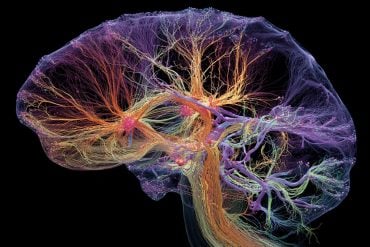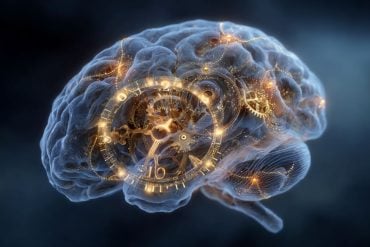Summary: Life is punctuated by stochastic oscillations, from fireflies to heartbeats. While researchers have managed to interpret some patterns, many have remained unexplained. However, researchers devised a novel framework to compare and analyze these oscillations. This discovery offers a fresh lens on how these patterns shape our lives.
Key Facts:
- The new framework allows for a universal comparison of oscillations, even those with distinct underlying mechanisms.
- Oscillations in the heart or brain, when not in sync, can lead to conditions like atrial fibrillation, Parkinson’s disease, or epilepsy.
- This breakthrough approach turns the challenge of comparing oscillators into a linear algebra problem, providing unparalleled precision.
Source: Case Western Reserve
Life’s random rhythms surround us–from the hypnotic, synchronized blinking of fireflies…to the back-and-forth motion of a child’s swing… to slight variations in the otherwise steady lub-dub of the human heart.
But truly understanding those rhythms—called stochastic, or random, oscillations—has eluded scientists. While researchers and clinicians have some success in parsing brain waves and heartbeats, they’ve been unable to compare or catalog an untold number of variations and sources.
Gaining such insight into the underlying source of oscillations “could lead to advances in neural science, cardiac science and any number of different fields,” said Peter Thomas, a professor of applied mathematics at Case Western Reserve University.
Thomas is part of an international team that says it has developed a novel, universal framework for comparing and contrasting oscillations—regardless of their different underlying mechanisms—which could become a critical step toward someday fully understanding them.
Their findings were recently published in Proceedings of the National Academy of Sciences.
“We turned the problem of comparing oscillators into a linear algebra problem,” Thomas said. “What we have done is vastly more precise than what was available before. It’s a major conceptual advance.”
The researchers say others can now compare, better understand—and even manipulate—oscillators previously considered to have completely different properties.
“If your heart cells aren’t synchronized, you die of atrial fibrillation,” Thomas said. “But if your brain cells synchronize too much, you have Parkinson’s disease, or epilepsy, depending on which part of the brain the synchronization occurs in.
“By using our new framework, that heart or brain scientist may be able to better understand what the oscillations could mean and how the heart or brain is working or changing over time.”
Swaying skyscrapers and brain waves
Thomas said the researchers—who included collaborators from universities in France, Germany and Spain—found a new way to use complex numbers to describe the timing of oscillators and how “noisy,” or imprecisely timed, they are.
Most oscillations are irregular to some extent, Thomas said. For example, a heart rhythm is not 100% regular. A natural variation of 5-10% in the heartbeat is considered healthy.
Thomas said the problem with comparing oscillators can be illustrated by considering two markedly different examples: brain rhythms and swaying skyscrapers.
“In San Francisco, modern skyscrapers sway in the wind, buffeted by randomly shifting air currents—they’re pushed slightly out of their vertical posture, but the mechanical properties of the structure pull them back,” he said.
“This combination of flexibility and resilience helps high-rise buildings survive shaking during earthquakes. You wouldn’t think this process could be compared with brain waves, but our new formalism lets you compare them.”
How their findings might help either discipline—mechanical engineering and neuroscience—may be unknown right now, Thomas said, comparing the conceptual advance to when Galileo discovered Jupiter’s orbiting moons.
“What Galileo realized was a new point of view, and while our discovery is not as far-reaching as Galileo’s, it is similarly a change in perspective,” he said. “What we report in our paper is an entirely new point of view on stochastic oscillators.”
About this neuroscience research news
Author: Peter Thomas
Source: Case Western Reserve
Contact: Peter Thomas – Case Western Reserve
Image: The image is credited to Neuroscience News
Original Research: Closed access.
“A universal description of stochastic oscillators” by Peter Thomas et al. PNAS
Abstract
A universal description of stochastic oscillators
Many systems in physics, chemistry, and biology exhibit oscillations with a pronounced random component. Such stochastic oscillations can emerge via different mechanisms, for example, linear dynamics of a stable focus with fluctuations, limit-cycle systems perturbed by noise, or excitable systems in which random inputs lead to a train of pulses.
Despite their diverse origins, the phenomenology of random oscillations can be strikingly similar.
Here, we introduce a nonlinear transformation of stochastic oscillators to a complex-valued function Q∗1�1*(x) that greatly simplifies and unifies the mathematical description of the oscillator’s spontaneous activity, its response to an external time-dependent perturbation, and the correlation statistics of different oscillators that are weakly coupled.
The function Q∗1�1* (x) is the eigenfunction of the Kolmogorov backward operator with the least negative (but nonvanishing) eigenvalue λ1 = μ1 + iω1.
The resulting power spectrum of the complex-valued function is exactly given by a Lorentz spectrum with peak frequency ω1 and half-width μ1; its susceptibility with respect to a weak external forcing is given by a simple one-pole filter, centered around ω1; and the cross-spectrum between two coupled oscillators can be easily expressed by a combination of the spontaneous power spectra of the uncoupled systems and their susceptibilities.
Our approach makes qualitatively different stochastic oscillators comparable, provides simple characteristics for the coherence of the random oscillation, and gives a framework for the description of weakly coupled oscillators.







